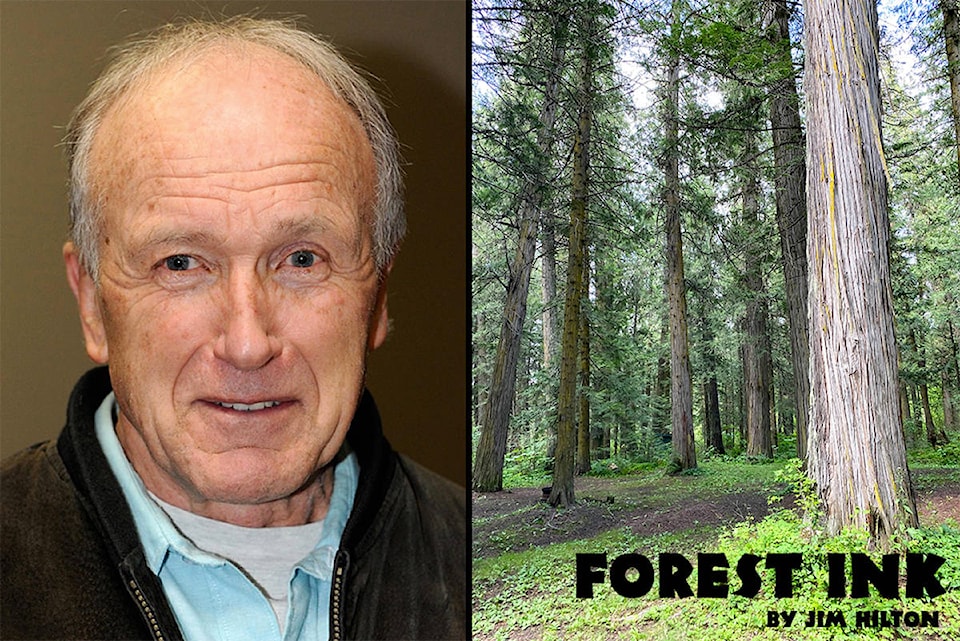When the bio energy plant started using residual mill material from the Williams Lake sawmills rather than being burned in bee hive burners it was a win-win for industry as well as the public.
The new plant produced electricity for the provincial power grid and burned much cleaner but some locals point out it would be better if the plant had been located out of the valley as originally proposed.
There was enough residual from the lumber mills that the bark component was used to produce electricity and the sawdust went to producing wood pellets.
READ MORE: Surrey sawmill donating enough lumber to build 50 houses in Lytton
The first wood pellet plant was located south of Quesnel. Another end use of the fine residual material was for production the medium density fibre board (MDF plant) also located in Quesnel. This was a better option than electricity or wood pellets from a climate change point of view since the carbon was stored (sequestered) as a building product rather than producing CO2.
Markets improved around the world because wood pellets were considered a green renewable resource and better than coal fired or in some cases nuclear power plants. A few places in the southern USA were producing wood pellets from whole trees which did not fit the original green criteria of wood pellet production but did meet the corporate agenda.
Fast forward and the community of Fort Nelson faces the same dilemma of corporate agenda versus the long term needs of the community.
In July 2019, the provincial government announced a new maximum logging rate for the Fort Nelson Timber Supply Area, the second largest such administrative unit in the province. The decision dramatically increased the Allowable Annual Cut to 2.6 million cubic metres of trees per year, up from 1.6 million cubic metres.
If the proposed Peak Renewables wood pellet plant (one of the largest in the world) goes ahead , whole green aspen trees will go into the plant which will require harvesting about 100 square kilometres (1.2 million cubic meters ) each year. About 50to 60 jobs would be created while producing 600 thousand tons of wood pellets yearly.
Locals remember that the same volume of wood supported 600 mill jobs from the plywood and OSB industries before Canfor closed down in 2008. The spruce tree component of the logged stands that used to be milled in the local plants will now be shipped to lumber mills between Fort St. John and Prince George.
As some locals point out the new Peak Renewables plant would mean one company controls the entire resource in Fort Nelson and that is not what many in the community want again.
As pointed out in an article by Ben Parfitt it is important to follow the source of wood pellet production when it comes to companies claiming a subsidy for replacing traditional fuels with pellets.
In 2020, advocacy group Stand.Earth issued a report warning that subsidies in the U.K., the EU and Japan are fuelling an alarming increase in wood pellet use that will further accelerate global greenhouse-gas emissions.
Just one pellet-burning power plant in the U.K., Drax, is collecting subsidies equivalent to $1 billion annually.
Meanwhile in Japan, subsidies aimed at using wood-fired energy to displace power from coal and nuclear plants could mean that the country will be consuming the equivalent of 20 million tonnes of wood pellets by 2030
If readers want additional information you can google Fort Nelson pellet plant articles by: Ben Parfitt Feb 2021, TheTyee.ca or Jim Stirling The LSJ, Spring 2021.
Jim Hilton is a professional agrologist and forester who has lived and worked in the Cariboo Chilcotin for the past 40 years. Now retired, Hilton still volunteers his skills with local community forests organizations.
READ MORE: Change in mindset needed with old-growth forests
Do you have something to add to this story, or something else we should report on? Email: cassidy.dankochik@quesnelobserver.com
Like us on Facebook and follow us on Twitter.
